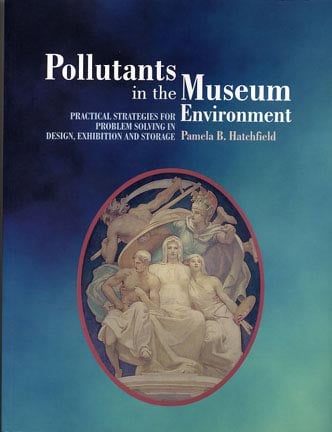 Art Conservators are conservative. Not necessarily in the political sense, but most certainly in their approach to their work. As well as they should be. Conservation-restoration is a profession devoted to the preservation of cultural heritage for the future. Words can be biased; objects and art may tell a more revealing story of a past society. The role of the conservator involves the examination, conservation, and preservation of cultural objects using any methods that prove effective in keeping that property in as close to its original condition as possible for as long as possible. Minimal intervention is a guideline a conservator must follow.
Art Conservators are conservative. Not necessarily in the political sense, but most certainly in their approach to their work. As well as they should be. Conservation-restoration is a profession devoted to the preservation of cultural heritage for the future. Words can be biased; objects and art may tell a more revealing story of a past society. The role of the conservator involves the examination, conservation, and preservation of cultural objects using any methods that prove effective in keeping that property in as close to its original condition as possible for as long as possible. Minimal intervention is a guideline a conservator must follow.
Here in Boston, the Museum of Fine Arts (MFA) is an internationally renowned museum displaying and storing some of the finest collections of our human chronicle. Head of Objects Conservation at the MFA is Pam Hatchfield, who has written an important book for the conservators’ trade. Pollutants in the Museum Environment, Practical Strategies For Problem Solving in Design, Exhibition, and Storage is highly technical, outlining all the various materials that have been previously been applied and currently used in the making of art, in the protection of art (such as packaging) and in the buildings housing art. When reading the book, it is clear to see that Pam’s objective is not to endorse or disparage products or materials. The book is factual and detailed in describing how the materials work and/or how they may degrade artwork. Not just for conservators, this book is great resource for any industry concerned with how materials may contaminate and, in our packaging world, prevent or accelerate degradation.
We at Liberty Packaging are pleased to note that Pam reviewed and analyzed our main product line, the Intercept Technology packaging lines. “They (Corrosion Intercept and Static Intercept) were developed for the protection of sensitive materials from electrostatic discharge and corrosion and are intended to be used as enclosures to protect materials from corrosive environments containing pollutants such as hydrogen sulfide, carbonyl sulfide, chlorine and hydrogen chloride.” The pollutants mentioned are atmospheric corrosive gases that manufacturers may find attacking their own hard-earned products and capital in factories, in storage, and in shipment, especially when shipping overseas and/or most certainly, to harsh climates like Southeast Asia. Knowledge can be attained from every industry and applied to others.
Because Intercept products are clean and perform wonderfully, they are becoming more readily used in the archival and museum field and are available for storage centers, archives, museums, and even home collection use through Liberty distributor Talas Online.
Intercept Technology Packaging products fit within a sustainability strategy because they are reusable, recyclable, do not contain or use volatile components (No VOCs, Not a VCI) and leave a smaller carbon footprint than most traditional protective packaging products.
Liberty Intercept Blog
Intercept Packaging Reviewed by Leading Archivist
Posted by Joe Spitz on Mar 12, 2013 11:06:00 AM
Here in Boston, the Museum of Fine Arts (MFA) is an internationally renowned museum displaying and storing some of the finest collections of our human chronicle. Head of Objects Conservation at the MFA is Pam Hatchfield, who has written an important book for the conservators’ trade. Pollutants in the Museum Environment, Practical Strategies For Problem Solving in Design, Exhibition, and Storage is highly technical, outlining all the various materials that have been previously been applied and currently used in the making of art, in the protection of art (such as packaging) and in the buildings housing art. When reading the book, it is clear to see that Pam’s objective is not to endorse or disparage products or materials. The book is factual and detailed in describing how the materials work and/or how they may degrade artwork. Not just for conservators, this book is great resource for any industry concerned with how materials may contaminate and, in our packaging world, prevent or accelerate degradation.
We at Liberty Packaging are pleased to note that Pam reviewed and analyzed our main product line, the Intercept Technology packaging lines. “They (Corrosion Intercept and Static Intercept) were developed for the protection of sensitive materials from electrostatic discharge and corrosion and are intended to be used as enclosures to protect materials from corrosive environments containing pollutants such as hydrogen sulfide, carbonyl sulfide, chlorine and hydrogen chloride.” The pollutants mentioned are atmospheric corrosive gases that manufacturers may find attacking their own hard-earned products and capital in factories, in storage, and in shipment, especially when shipping overseas and/or most certainly, to harsh climates like Southeast Asia. Knowledge can be attained from every industry and applied to others.
Because Intercept products are clean and perform wonderfully, they are becoming more readily used in the archival and museum field and are available for storage centers, archives, museums, and even home collection use through Liberty distributor Talas Online.
Topics: corrosion, art, MFA, archival
Related Posts
Condensation and Corrosion Control: Protect Product Integrity
Corrosion via Corrugate
What is Corrosion?
Leave a Comment